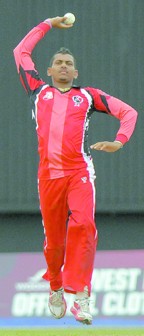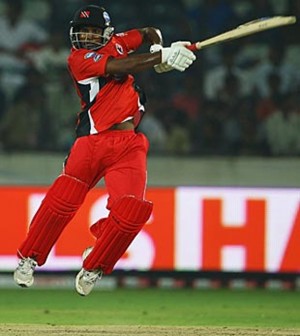As one recalls the West Indies impressive 2-2 series tie against the four-time World Cup champions and number one ranked one-day International team Australia, one has to quantify some basic realities.
In the midst of the glorious adulation the team is most certainly deserving for putting out its best one-day tournament performance against a top ranked side in four years, ever since they defeated Sri Lanka 2-0 in a three-match series at home, one must take into consideration that the Aussies are in the process of rebuilding.
Fans have to recognize that during the decline of the past 15 years, the Caribbean side has been able to pull off sporadic series of excellence.

The 1997 3-0 whitewash in Pakistan has been earmarked by most cricket pundits as the starting point of the current decline in fortunes of the once dominant team.
The regional side has struggled to put together prolonged periods of consistent performances in all formats of the game.
Although the West Indies had not beaten Australia in a one-day series since 1995, the regional side tied the 1999 Cable & Wireless home series 3-3, which was de ja vu to the just concluded five- match fixture.
In 1999, were it not for crowd infringement here in Guyana, the West Indies would have won that series 4-3.
And, if Darren Sammy/Kemar Roach did not reproduce a live reenactment of the infamous Lance Klusener/Allan Donald running between the wickets brain freeze of the 1999 World Cup semi-final, a 3-2 result in the home team’s favour would most definitely have been the outcome this time around.
Other notable tournament successes for the regional side over the last 17 years against opposition ranked above them would be the Test and one-day home series versus England in 1998; 2-2 test series draw vs Australia 1999; 2-1 test series win vs India 2002; 2001 tri-nations series tournament in Zimbabwe win over India in the final; 4-3 one-day series win in India 2002; 2004 ICC Champions Trophy win; 2006 home tournament victory over India 4-1; and 2007 one-day series victory in England.
This essentially represents a drop of success in a pool of disheartening results in almost two decades and therefore one cannot be sure that the series tie versus Australia is a turning point once and for all for the boys in maroon, instead of another flash in the pan performance.

One of the biggest problems for the West Indies during the last 15 years was finding a good bowling attack.
The entire aforementioned series victories at their core were based upon the team’s batting. At the turn of the century Brian Lara, Carl Hooper and Shivnarine Chanderpaul were the premier batsmen and Chris Gayle, and Ramnaresh Sarwan emerged as the region’s best two batsmen of the last decade.
Consider for example the West Indies top order that defeated South Africa during that famous victory during the opening match of the 2003 World Cup. It read: Gayle, Hinds, Lara, Chanderpaul, Hooper, Sarwan. Easily one the West Indies best top six set-ups of the 2000s era.
The bowling attack ever since the retirement of the legendary duo of Curtly Ambrose and Courtney Walsh circa 2000/2001 struggled to find potential heirs to the bowling throne.
Pedro Collins, Reon King, Mervyn Dillon, Franklyn Rose and Corey Collymore, showed good early signs but for different reasons faded away.
There were others who played such as Cameron Cuffy, Adam Sanford, Jermaine Lawson, Vasbert Drakes, Darren Powell, Marlon Black, Ian Bradshaw, Kerry Jeremy, Lionel Baker, Gavin Tonge, Dwight Washington and Deighton Butler, who all seemed out of their depth at the highest level.
Dating back to that 2009, 1-0 home series win against England, the emergence of some talented, young players along with the re-emergence of a few long standing regulars began to show the first signs that a shift in the fortunes of the West Indies team was on the horizon.
With Jerome Taylor and Fidel Edwards continuously injured, Kemar Roach took up the mantle as attack leader without support, by impressing during the 09/10 Australian tour.
During 2011 Edwards came back with a bang after being out of cricket for two years. Ravi Rampaul also made great improvement starting with his five-wicket haul in the 2011 World Cup match versus India ended 2011 as West Indies leading wicket-taker for the calendar year.

Then there was exciting quick-bowling all-rounder Andre Russell and Trinidad’s High Performance Center graduate Shanon Gabriel to round up an impressive group of fast-bowlers to choose from.
The last 12 months saw the rise of the talented spin combo of Devendra Bishoo and Sunil Narine, which brought new dimensions to the bowling armory. Not since the 1950s when Sonny Ramadin and Alf Valentine marshaled the West Indies attack in those formative years, has two spinners caused such fervor in the Caribbean.
While Gayle and Sarwan have graduated to seniority status in the batting ranks along with Chanderpaul, that trio (Marlon Samuels to an extent) is currently supported by the impressive new age batting group of Darren Bravo, Lendl Simmons, Adrian Barath, Kieron Pollard and Kirk Edwards.
Their performances in the respective formats of the game have given way to optimism that a bright future awaits them in the West Indies senior team.
So basically at the moment, the core group of players in the ranks of the Caribbean side is essentially the best combination of proven experienced stalwarts and talented young players since the previously mentioned departure of Ambrose and Walsh at the turn of the millennium.
Thus, the West Indies tied series should be a sign of genuine progress and the team should soon be out of the doldrums with the players at their disposal.
Darren Sammy
Unfortunately, every West Indies fan is well au fait that the best West Indies team ever since Darren Sammy became default skipper in November 2010 is never on the field these days and senior players such a Gayle and Sarwan due to reasons well documented are not part of the current team.
We have waited for a long time for the West Indies team to have this key balance that is an important pre-requisite in creating a modicum of a successful international team like the Australians have shown. But for the team to build on this progress Sammy has to go.
Under the modus operandi of the selection criteria, the West Indies will never be able to pick Edwards/Roach/Rampaul in the same XI because Sammy will have to play. Nor on a hypothetical turning track could Narine/Bishoo be unleashed to opposition batsmen – because Sammy will have to play.
Sammy is a hard-working cricketer who although he has limited talent, puts a great deal of passion into his cricket. His big hitting performance with that bat during the one-day series along with other sporadic efforts since he became captain in 2010 highlights this.
However, the Windward Islands man cannot fit into the West best Indies team XI in any format – there is absolutely no legitimate argument anyone can give to justify a claim otherwise. Sammy’s continued presence could potentially be the spoke in the wheel of West Indies progress – given that once he keeps playing the best possible team will not get a chance to play together – which will be a tragedy.




